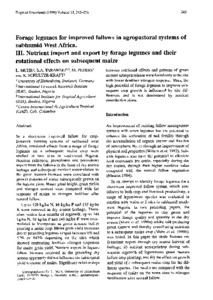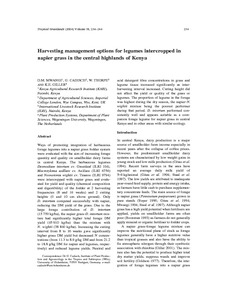Mulberry for animal production
This publication contains the articles distributed for the subscribers to the first electronic conference on mulberry for animal production, held bewteen May and August 2000. The conference was organized by the FAO Animal Production and Health Division in response to the growing interest in the cultivation and use of mulberry to feed various domestic animals. The contributions covered a variety of topics including germplasm resources in various countries, agronomic aspects, chemical composition, nutritive value and animal performance.



